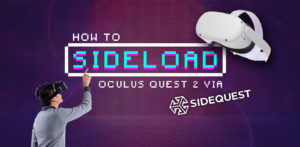There is nothing worse than investing huge amounts of money in PCVR only to find that games run like absolute garbage thanks to your PC not being up to snuff! If your PC is more than a couple of years old it might be worth spending the extra few minutes checking out the specs to see if it’s even VR-ready yet.
The most important component in any PC for virtual reality is the graphics card. The graphics card or GPU handles all the heavy lifting when it comes to VR. Having a good or bad graphics card can greatly influence your VR experience. Having crisp resolution, high graphical detail and a blistering fast refresh rate all comes down mostly to how good the graphics card in your PC is. Having a VR-ready graphics card is the minimum requirement but you’re better off investing a little more and buying one of the best graphics card for VR from our comprehensive guide below.
We’ll try to cover them all, from budget to top of the range. From VR minimum requirements to the absolute best for VR gaming, we’ll show a great selection spanning the ranges. So let’s get stuck into it, shall we?
VR-Ready Graphics Card – The Bare Minimum You Need To Run VR Games
VR gaming has come a long way in such a short amount of time. The boost in technology has led to a massive boost in game quality and more importantly, means newer titles need a lot more juice to run than they did three years ago. That said, if all you want to do is play old titles or have minimal virtual reality experiences then you won’t need any more than the minimum requirements to get VR up and running on your PC. You may even find that you can play more recent titles just with lower graphical settings and perhaps a lower frame rate. Yes, not ideal and not really what the games developers would recommend but a lot of fun can still be had in VR even at the lowest rung on the ladder.
Assuming your headset is fully functional and ready to hook up to a PC, then the recommended minimum graphics cards for VR gaming are as follows for several different models old and new on the market listed below:
Valve Index
OS: Windows 10 or higher, SteamOS, Linux
Processor: Dual Core with Hyper-Threading
Memory: 8GB RAM or more
Graphics: Nvidia GeForce GTX 970 / AMD RX 480 equivalent or higher
Ports: DisplayPort 1.2 or higher and USB 2.0+ port
Oculus Quest 2
OS: Windows 10 or higher
Processor: Intel i5-4590 / AMD Ryzen 5 1500X or greater
Memory: 8GB RAM or more
Graphics: Nvidia GeForce GTX 1060 / AMD Radeon RX 400 Series equivalent or higher
Ports: 1 USB port
HTC Vive Pro 2
OS: Windows 10 or higher
Processor: Intel Core i5-4590 or AMD Ryzen 1500 equivalent or greater
Memory: 8GB RAM or more
Graphics: Nvidia GeForce GTX 1060 / AMD Radeon RX 480 equivalent or higher
Ports: DisplayPort 1.2 or higher, USB 3.0 or newer
HP Reverb G2
OS: Windows 10 or higher
Processor: Intel Core i5, i7 / Intel Xeon E3-1240 v5 / AMD Ryzen 5 equivalent or higher
Memory: 8GB RAM or more
Graphics: Nvidia GeForce GTX 1060 / AMD Radeon RX 580 equivalent or higher
Ports: DisplayPort 1.3, USB 3.0 Type-C
Oculus Rift and Oculus Rift S System Requirements
OS: Windows 10 or higher
Processor: Intel i3-6100/AMD Ryzen 3 1200, FX4350 or greater.
Graphics Card: NVIDIA GTX 1050 Ti/AMD Radeon RX 470 or greater.
Alternative Graphics Card: NVIDIA GTX 960 4 GB/AMD Radeon R9 290 or greater.
Operating System: Windows 10.
Memory: 8 GB RAM.
To find out the minimum specifications for other headsets, we recommend searching for a FAQ page from the manufacturer to ensure compatibility with your PC. AMD graphics cards tend to be a little more affordable than NVIDIA so if you’re budget conscious always look out for the AMD equivalent model on the list.
Good Graphics Card For VR Gaming – What’s Good Enough To Run Recent VR Titles Well
Half-Life: Alyx is a rock-solid triple-A VR title that blows users away with its game immersion, clever storytelling, and high graphical detail. Designed by Valve themselves and with some wizardry under the hood, it’s a game that even with a half-decent graphics card, can produce amazing experiences. The bold crisp graphics, silky smooth frame rates, and overall amazing look and feel of the game can all be handled expertly with a decent graphics card.
For us, it’s the benchmark mark that other games aspire to be so it’s also a good test of what graphics card is most suitable for PCVR. Picking a graphics card that allows you to play Half-Life: Alyx on high settings is almost future-proofing your VR-ready PC as it should be able to handle plenty of great VR titles going forward. The recommended specs for Half-Life: Alyx are as follows:
Half-Life: Alyx Requirements for High and Ultra Settings
CPU: AMD Ryzen 5 3600 / Ryzen 7 3700X or Intel Core i5 12400 / 11400
GPU (HIGH): NVIDIA GeForce RTX 3060 Ti / RTX 2070 Super 8GB or AMD Radeon RX 6700 XT 12GB
GPU (ULTRA): NVIDIA GeForce RTX 3070 / RTX 2080 Super 8GB or AMD Radeon RX 6800 16GB
RAM: 16GB DDR4 (2x8GB, 3200MHz)
So it’s clear from the spec sheet above that older graphics cards from a couple of years ago are still very capable of playing graphically intensive VR titles without breaking your PC…or your budget. The 3060Ti in particular is very affordable and still outperforms most graphics cards to date. The support from the NVIDIA GeForce team is the real superstar here and well worth a mention. They have constant updates to allow performance tweaks and optimizations of gaming through their graphics cards. Their support for 3060 range benefits greatly from this and is a very worthy graphics card if you’re in the market for one.
Best Graphics Cards For VR – What Are The Ultimate Bells And Whistles GPUs?
Putting budget to one side for a minute, let’s take a more in-depth look at some of the latest and greatest GPUs on the market at the moment. These are the cream of the crop where money or expense isn’t a factor and will of course give you the greatest performance for not only VR but for regular gaming as well. If you have the money and you want to future-proof your PC for the next few years then these are the graphics cards you should be keeping an eye out for!
GIGABYTE NVIDIA GeForce RTX 3080 GAMING OC 10GB V2 LHR Graphics Card
NVIDIA Ampere Streaming Multiprocessors: The building blocks for the world’s fastest, most efficient GPUs, the all-new Ampere SM brings 2X the FP32 throughput and improved power efficiency. This graphics card is stellar and very capable of running top-tier VR gaming experiences without little to no fuss. The combination of core speeds and an effective cooling system allow for some serious performance boosts injected into your PC and VR experiences.
This graphics card is currently retailing for approximately $769, but shop around for better deals before purchase.
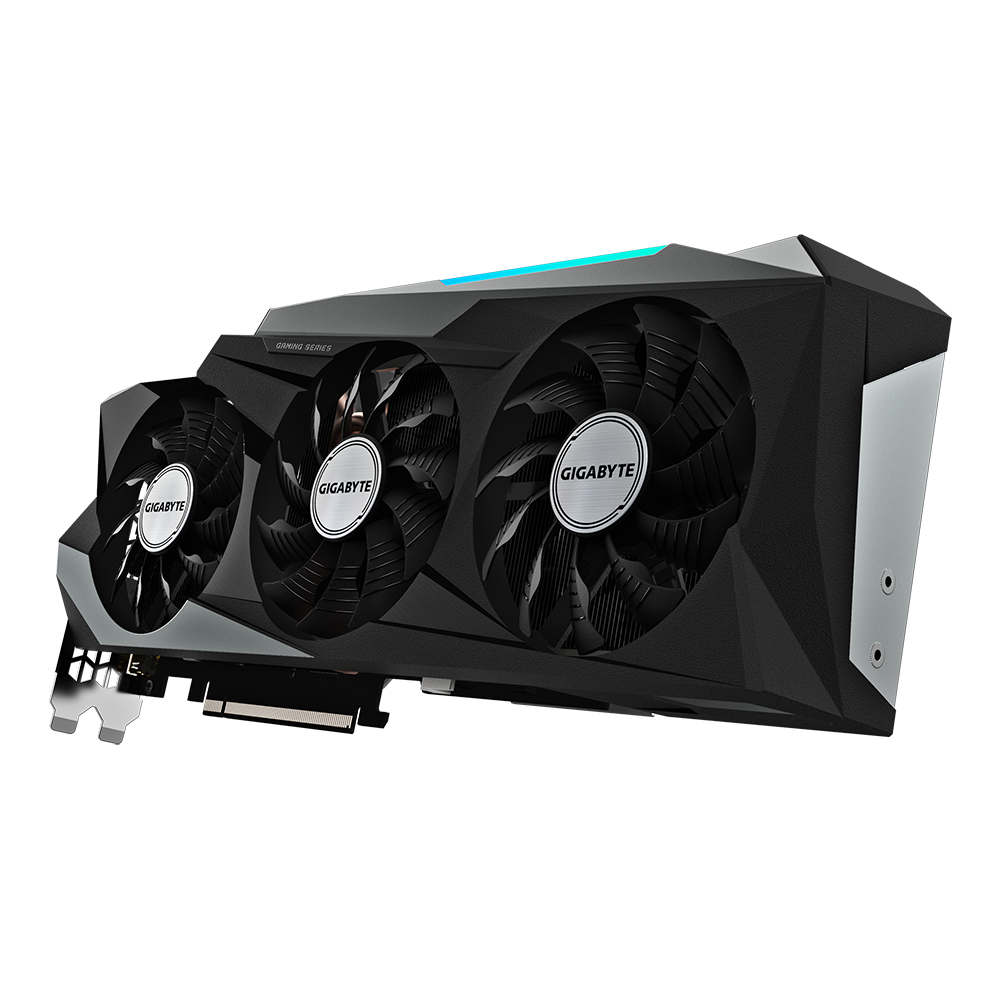
Photo credit https://www.gigabyte.com/Graphics-Card/GV-N3080GAMING-OC-10GD-rev-20#kf
2nd Generation RT Cores: Experience 2X the throughput of 1st gen RT Cores, plus concurrent RT and shading for a whole new level of ray tracing performance.
3rd Generation Tensor Cores: Get up to 2X the throughput with structural sparsity and advanced AI algorithms such as DLSS. These cores deliver a massive boost to in-game performance and all-new AI capabilities.
Core Clock:
1800MHz
WINDFORCE 3X Cooler
Full specifications are as follows:
Brand
Gigabyte
Product Dimensions
32 x 12.9 x 5.5 cm; 1.36 Kilograms
Batteries
1 Lithium Ion batteries required.
Item model number
GV-N3080GAMING OC-10GD V2
Manufacturer
Gigabyte
Series
NVIDIA GeForce RTX 3080
Resolution
7680 x 4320 Pixels
Memory Clock Speed
19000 MHz
Graphics Coprocessor
NVIDIA GeForce RTX 3080
Graphics Chipset Brand
NVIDIA
Graphics RAM Type
GDDR6X
Graphics Card Ram Size
10 GB
Graphics Card Interface
PCI-Express x16
Wattage
750 watts
Are Batteries Included
No
Lithium Battery Energy Content
2 Kilowatt Hours
Lithium Battery Weight
2 Grams
No. Of Lith Ion Cells
5
No. of Lith Metal Cells
5
Item Weight
1.36 kg
GIGABYTE GeForce RTX 3080 Ti Gaming OC 12G Graphics Card
This is the grown-up Daddy version of the RTX 3080. The Ti offers more power and better optimization than its sibling with a hefty price tag to boot. Retailing currently for approximately $1,250 is an investment not for the faint of heart. However, you do get a lot more bang for your buck with the Ti so it might be worth the upgrade for some.
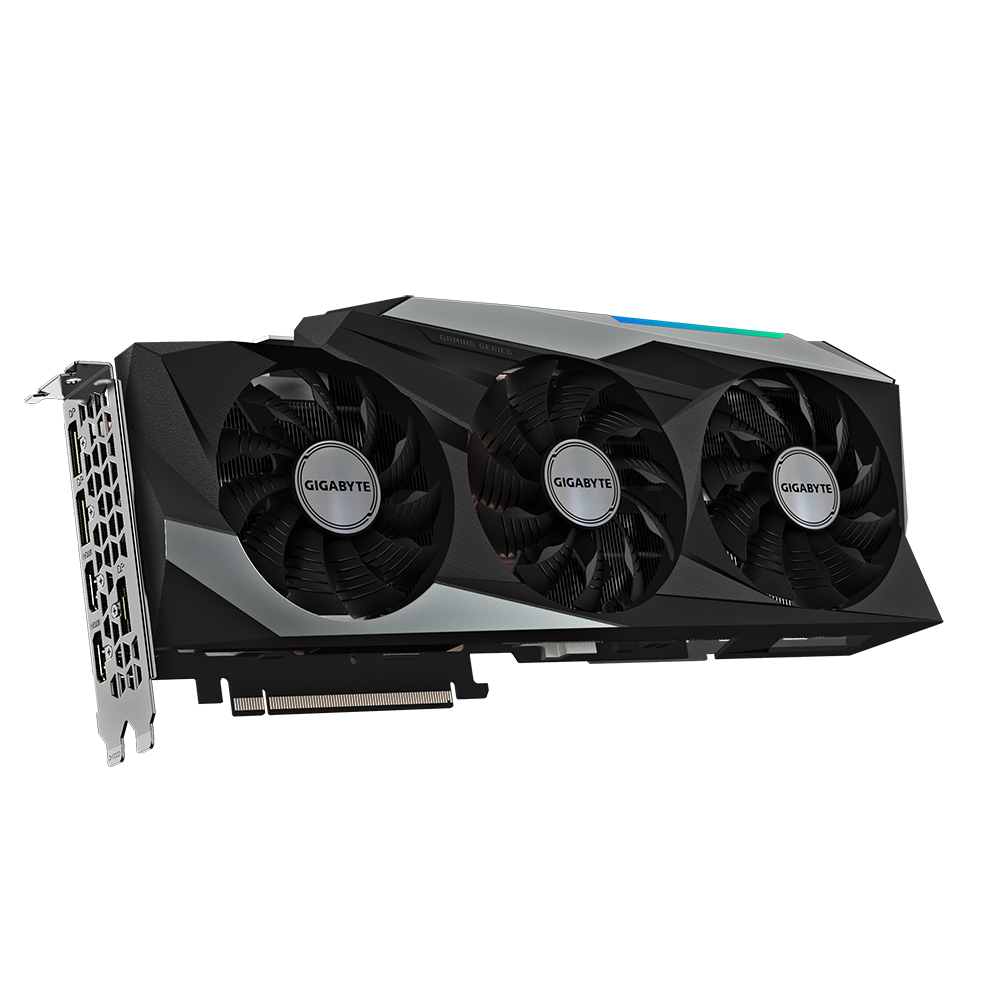
Photo credit https://www.gigabyte.com/Graphics-Card/GV-N308TGAMING-OC-12GD#kf
Coming with more power, more RAM, more speed, and better optimization this beautiful brick can produce some of the finest graphical outputs your eyes have ever seen. Well capable of outperforming almost all other cards on the market and still considered affordable by today’s standard the RTX 3080 Ti is not only one of the best on the market. It’s one of the most popular graphics card on the market too.
Key features include the 2nd Generation RT cores plus the 3rd Generation Tensor cores. It also boasts the Windforce 3X cooling system with alternate spinning fans. It has 12GB of DDR6 RAM as opposed to the 10GB featured on the original RTX 3080 which is a nice upgrade and provides extra speed and power for your modern gaming.
Full specifications for the RTX 3080 Ti:
Graphics Processing GeForce RTX™ 3080 Ti
Core Clock 1710 MHz (Reference Card: 1665 MHz)
CUDA® Cores 10240
Memory Clock 19000 MHz
Memory Size 12 GB
Memory Type GDDR6X
Memory Bus 384 bit
Memory Bandwidth (GB/sec) 912 GB/s
Card Bus PCI-E 4.0 x 16
Digital max resolution 7680×4320
Multi-view 4
Card size L=320 W=129 H=55 mm (2.7 slot)
PCB Form ATX
DirectX 12 Ultimate
OpenGL 4.6
Recommended PSU 750W
Power Connectors 8 pin*2
Output DisplayPort 1.4a *3
HDMI 2.1 *2
SLI Support N/A
AMD Radeon RX 6600 8GB GDDR6 Gaming Graphics Card
Switching it up a little now and moving over to the only other big brand competitor. AMD has long been nipping at the heels of NVIDIA with their products and have sustained many successes over the years. The AMD Radeon RX 6600 was and is AMD’s answer to the very popular RTX 3060. Designed with HD gaming in mind the RX 6600 uses the rather successful FidelityFX Super Resolution technology to boost performance on triple-A titles and give users some stunning results.
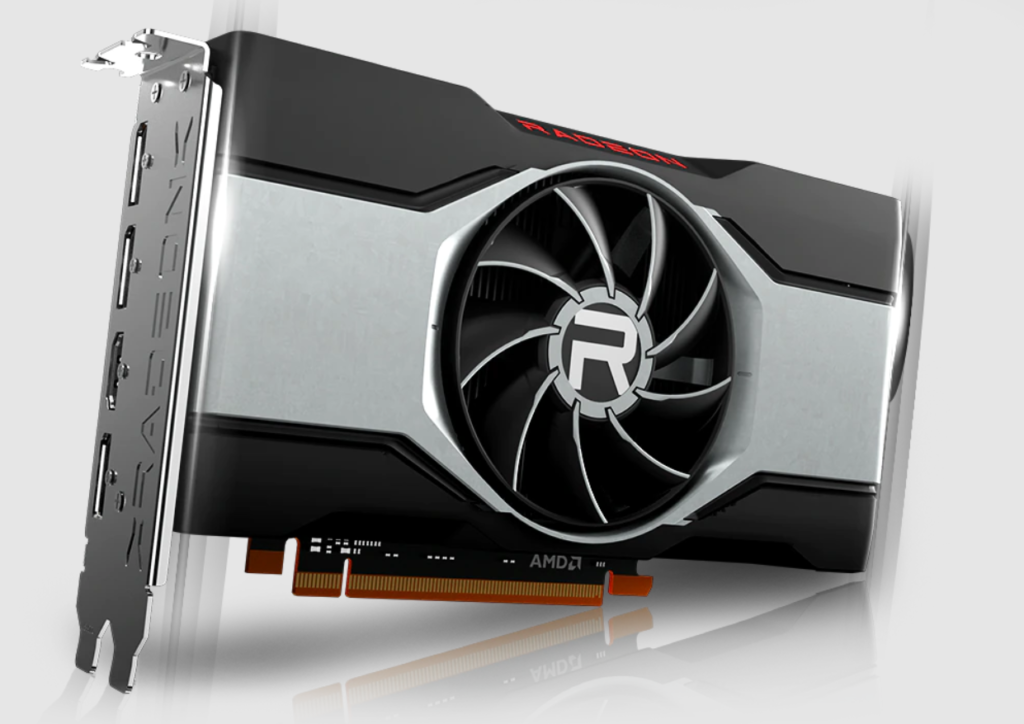
Photo credit https://www.amd.com/en/products/graphics/amd-radeon-rx-6600
That said, it doesn’t compare to the RTX 3060 and loses in comparison on almost every benchmark test. The appeal of this AMD graphics card is the price. AMD as a brand are associated with lower-cost GPUs when compared to NVIDIA and the RX 6600 offers very decent performance at an excellent price. Currently retailing for approx. $330 which is an incredible bang for your buck. The value combined with the decent performance on offer makes it one of the best bargains if you’re looking to get some VR gaming on the go but don’t want to shell out too much for the experience. If you’re interested in the AMD Radeon RX 6600 then take a look at the full specifications list below:
Brand ASUS
Product Dimensions 24.38 x 13.46 x 4.83 cm; 1.13 Kilograms
Item model number DUAL-RX6600-8G
Manufacturer Asus
Series DUAL-RX6600-8G
Form Factor Triple Slot, Full-height
Memory Clock Speed 2622 MHz
Graphics Coprocessor AMD Radeon RX 6600 XT
Graphics Chipset Brand AMD
Graphics RAM Type GDDR6
Graphics Card Ram Size 8 GB
Graphics Card Interface PCI-Express x16
Are Batteries Included No
Item Weight 1.13 kg
AMD Radeon RX 6950 XT, 16384 MB GDDR6
This is AMD’s most powerful graphics card that they currently have on the market and it packs quite the punch. Using AMD’s own FidelityFX Super Resolution 2.0 the graphics card can boost frame rates to deliver high-quality resolution, increased frame rates, and blisteringly good gaming experiences. AMD’s technology also boasts realistic lighting and reflections to provide amazing gaming visuals. However, the most visually stunning thing about the AMD Radeon RX 6950 XT is the price tag.
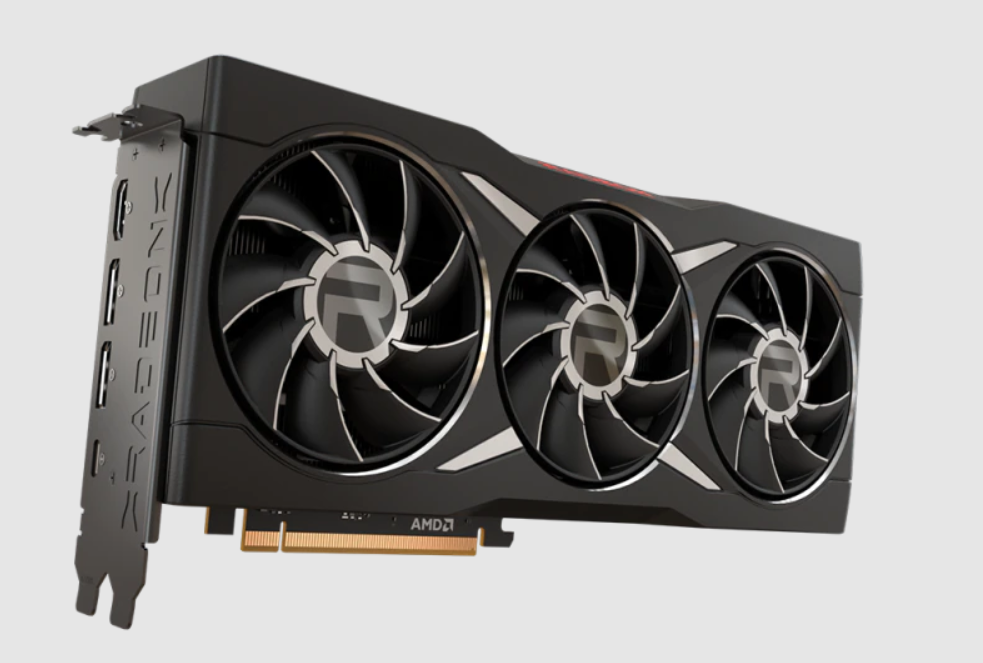
Photo credit https://www.amd.com/en/products/graphics/amd-radeon-rx-6950-xt
This currently retails for an eye-watering $1,200 and still falls short in performance when compared to any NVIDIA graphics card in the same price bracket. Unless you’re loyal to the AMD brand, you might consider taking the same amount of cash and picking up a superior NIVIDIA GeForce RTX 3080 Ti. However, who are we to judge? If the AMD Radeon RX 6950 XT tickles your fancy, then check out the full specification list below:
GPU Name Navi 21
GPU Variant Navi 21 KXTX (215-121000289)
Architecture RDNA 2.0
Foundry TSMC
Process Size 7 nm
Transistors 26,800 million
Die Size 520 mm²
Base Clock 1860 MHz
Game Clock 2100 MHz
Boost Clock 2310 MHz
Memory Clock 2250 MHz
Memory Size 16 GB
Memory Type GDDR6
Memory Bus 256 bit
Bandwidth 576.0 GB/s
NVIDIA GeForce RTX 4090
The most powerful graphics card currently on the market. To put it simply, there is nothing more powerful out there yet. To tell you just how good it is I’ll borrow the sales pitch from NVIDIA’s website as to be fair, everything they boast is true and this is truly an impressive piece of technology.
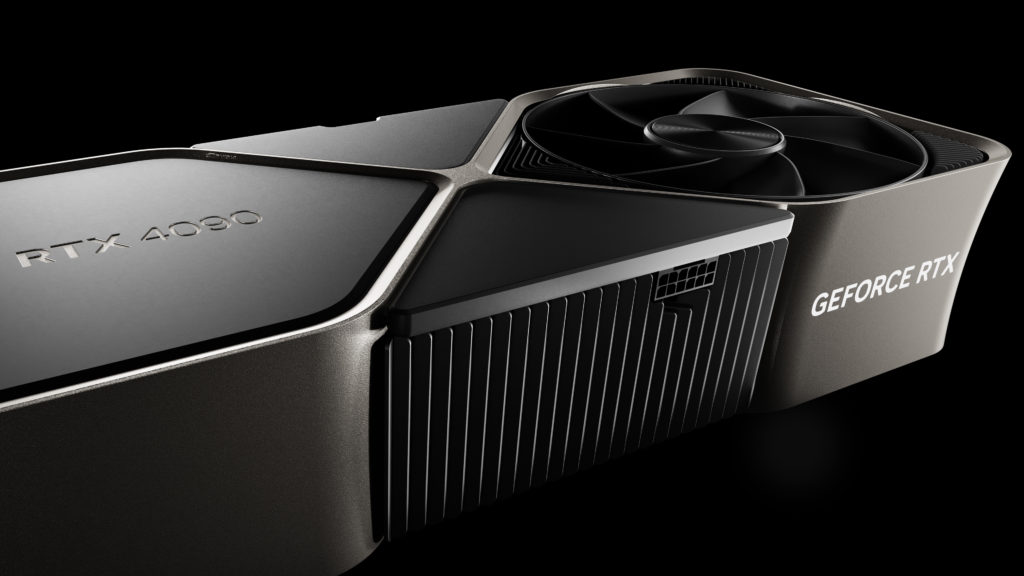
Photo credit https://www.nvidia.com/en-ph/geforce/graphics-cards/40-series/rtx-4090/
‘The NVIDIA® GeForce RTX™ 4090 is the ultimate GeForce GPU. It brings an enormous leap in performance, efficiency, and AI-powered graphics. Experience ultra-high-performance gaming, incredibly detailed virtual worlds, unprecedented productivity, and new ways to create. It’s powered by the NVIDIA Ada Lovelace architecture and comes with 24 GB of G6X memory to deliver the ultimate experience for gamers and creators. The Ada architecture unleashes the full glory of ray tracing, which simulates how light behaves in the real world. With the power of RTX 40 Series and third-gen RT Cores, you can experience incredibly detailed virtual worlds like never before. NVIDIA Reflex and GeForce RTX 40 Series GPUs deliver the lowest latency and best responsiveness for the ultimate competitive advantage. Built to optimize and measure system latency, Reflex provides faster target acquisition, quicker reaction times, and the best aim precision for competitive games.’
The word impressive doesn’t do the RTX 4090 enough justice. All this does however come at a steep price. Currently, the recommended retail price for the RTX 4090 is $1499. Not for those without the deepest of pockets among us. This is the absolute best there is, nothing else compares. NVIDIA do have more to come but for now, this is the cream of the crop and as such, earns its hefty price tag. If you’re interested and can afford the NIVIDIA GeForce RTX 4090 then take a look at the full specifications below:
NVIDIA CUDA® Cores 16384
Boost Clock (GHz) 2.52
Base Clock (GHz) 2.23
Memory Specs Standard Memory Config 24 GB GDDR6X
Memory Interface Width 384-bit
Ray Tracing Cores 3rd Generation
Tensor Cores 4th Generation
NVIDIA Architecture Ada Lovelace
NVIDIA DLSS 3
NVIDIA Reflex Yes
NVIDIA Broadcast Yes
PCI Express Gen 4 Yes
Resizable BAR Yes
NVIDIA® GeForce Experience™ Yes
NVIDIA Ansel Yes
NVIDIA FreeStyle Yes
NVIDIA ShadowPlay Yes
NVIDIA Highlights Yes
NVIDIA G-SYNC® Yes
Game Ready Drivers Yes
NVIDIA Studio Drivers Yes
NVIDIA Omniverse Yes
Microsoft DirectX® 12 Ultimate Yes
NVIDIA GPU Boost™ Yes
NVIDIA NVLink™ (SLI-Ready) No
Vulkan RT API, OpenGL 4.6 Yes
NVIDIA Encoder (NVENC) 2x 8th Generation
NVIDIA Decoder (NVDEC) 5th Generation
AV1 Encode Yes
AV1 Decode Yes
CUDA Capability 8.9
VR Ready Yes
Display Support 4K at 240Hz or 8K at 60Hz with DSC, HDR
Standard Display Connectors HDMI(2), 3x DisplayPort(3)
HDCP 2.3
Summary
So there we have it, folks. Plenty of options and a wide variety of choices to allow you to make the best decision for you. Covering quality, budget, performance, and power we’ve given you a healthy list of options to make an informed decision. The main takeaway is to match your budget with your needs as best you can. Whatever you choose, no doubt you have plenty of amazing virtual reality experiences for a long time to come.
If you’ve already got your PC and headset all set up and need to know what games to purchase, then check this out.

